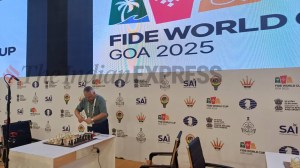Skilled labour the need of the hour
SURAT, May 21: Employing skilled workers, possibly on permanent basis; adherence to maintenance schedule and improvement in printing quality...

SURAT, May 21: Employing skilled workers, possibly on permanent basis; adherence to maintenance schedule and improvement in printing quality are among the recommendations made by the Textiles Committee in a survey report on `The Quality Level of Man-made Powerloom Fabrics in Surat.’
The powerloom sector of the textile industry — which generates largest employment after the agriculture sector — contributes nearly 54 per cent of the total cloth production in the country. Though the survey was conducted a year ago, its report was published only last week.
There are 20,000-odd powerloom units in and around Surat having about 4.25 lakh looms producing more than 1.70 crore meter grey fabric everyday; and about 300 processing units, most of which function on job-work basis. The Textile Committee — established under the Textiles Committee Act of 1963 –is a statutory body under the administrative control of the Ministry of Textiles.
The report states that processing units were hamstrung by the lack of skilled workforce and were employing mainly semi-skilled workers on contract basis. This was identified as one of the major reasons for high level of defect in the processed fabric (about 31 per 100 metre) in cause and effect analysis. The report recommends that skilled workers should be employed at least in areas like colour room, stitching end, feeding end and delivery end which are critical for ultimate quality.
Another reason for defect is inadequate maintenance of machines, the report says adding that is essential for minimising value loss. It also suggests close monitoring for cleaning and lubricating to reduce oil stain on the processed fabrics.
Printing defects remain despite modernisation, the report observes calling for change from semi-automatic to fully automatic flat-bed screen printing machine as also installing rotary screen printing machine in place of flat-bed type for printing other than cross-border saree for loss of value during printing.
The report calls for improvement in working conditions in powerloom units to the best possible extent. It points out that most units working in one shift of 12 hours and calls for switching over to two shifts of eight hours each to reduce human fatigue. Proper illumination, working space and ventilation and overall upgradation in general level of housekeeping.
The committee has found that maintenance schedule was not being adhered to even in powerloom units. The survey reveals that preventive maintenance in general is not being practised in the powerloom sector and only breakdown maintenance is paid attention to. Use of brush/wire instead of a piece of fabric has been suggested.
The report says considering the small size of operation of the decentralised weaving industry, vertical modernisation through entirely new modern weaving technology is not recommended. Instead of modernisation it suggests installation of simple attachments like Electro-mechanical warp stop motion; photoelectric weft stop motion, warp protectory motion and installation of Dobby and Jacquard for renovation of existing looms.
Employing technically qualified persons, introduction of systematic checking of fabric and discontinuing practice of adding excess oil on the yarn as well as fabric are among the other recommendations.





- 01
- 02
- 03
- 04
- 05

























